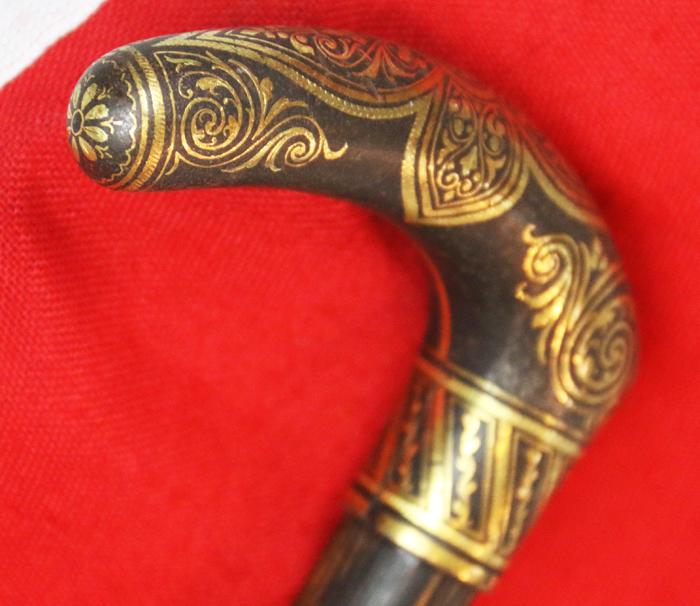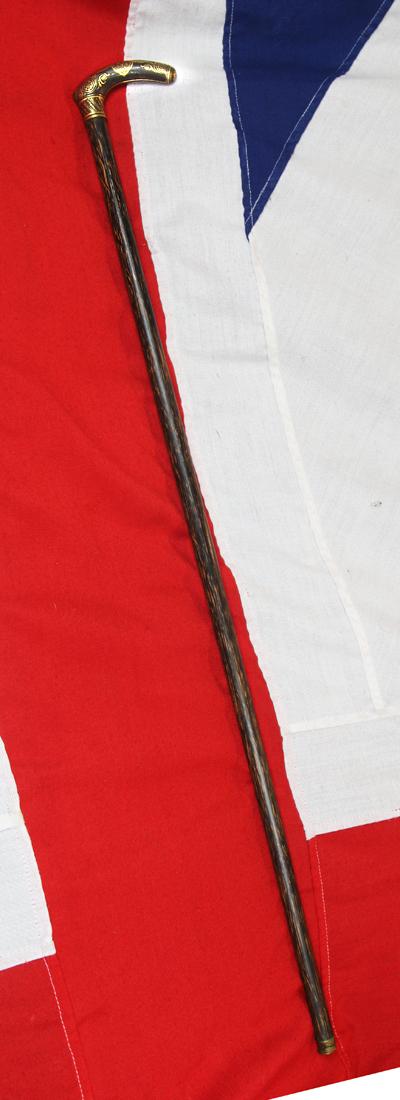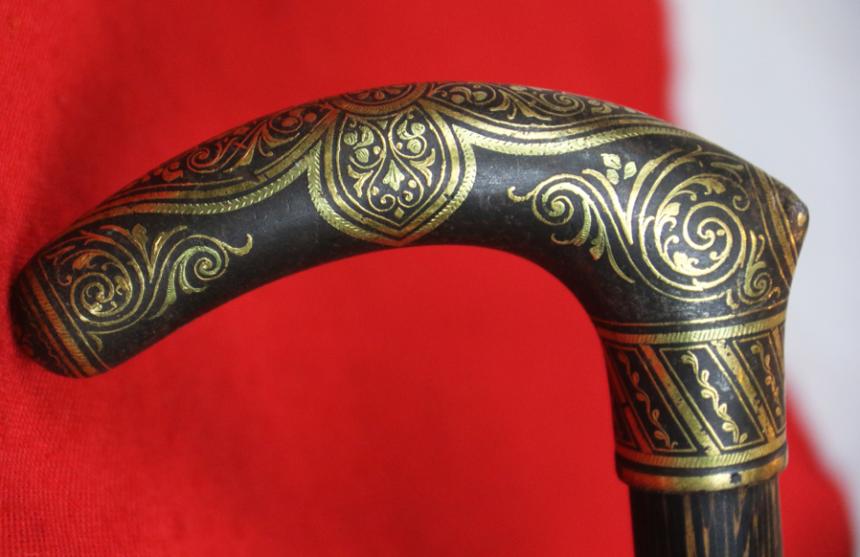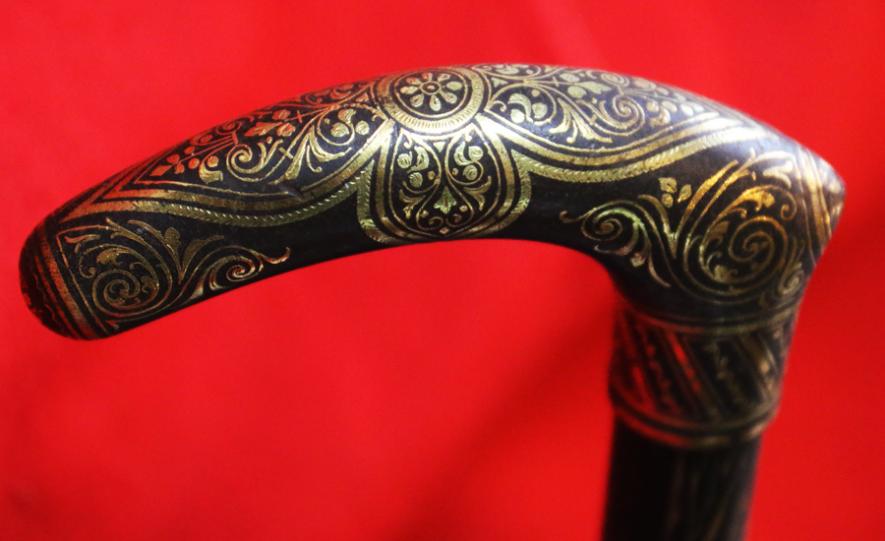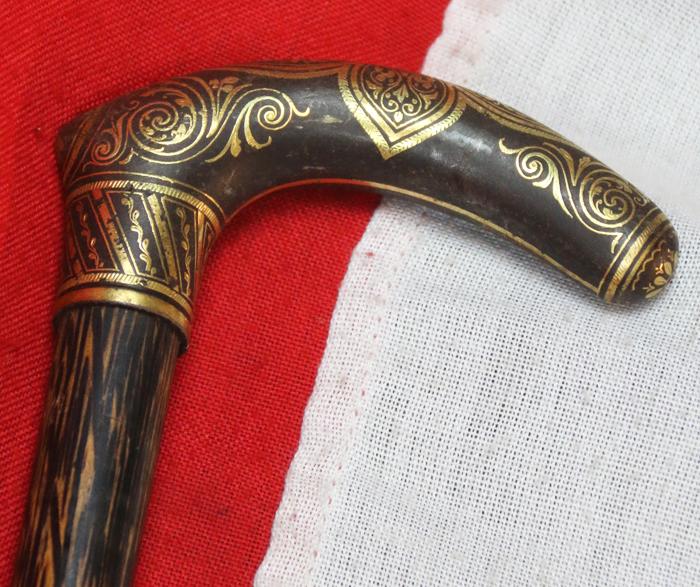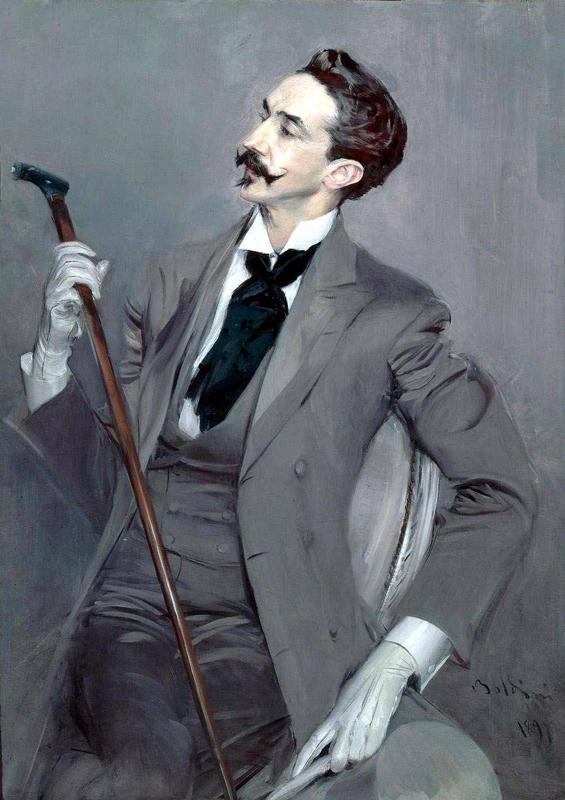A Fabulous, Extraordinarily Beautiful and Exquisite Quality Pure Koftgari Gold Inlaid Gentleman’s Walking Stick ‘Dandy Cane’ Inlaid With Incredibly Skillful Craftmanship
One of the most beautiful and finest quality examples we have ever seen. A steel handle inlaid with amazing two colour Koftgari goldwork of simply stunning quality. Koftgari is the Indian form of damascening which closely resembles the damascening found in Persia and Syria.
The inlay process begins after the piece is moulded and fully formed. The intended design is engraved into the base metal and fine gold or silver wire is then hammered into the grooves.
The base metal is always a hard metal, either steel, iron or bronze, and the inlay a soft metal, either gold or silver. This combination prevents the base from deforming when the wire inlay is hammered into the surface and results in the inlaid areas being well defined and of sharp appearance.
Swords, shield and armour were often decorated in koftgari work and domestic items such as boxes and betel containers, were also made. Every other portrait of a Georgian, Victorian, or Edwardian gentleman, shows some nattily dressed fellow with a walking stick pegged jauntily into the ground or a slim baton negligently tucked under the elbow. The dress cane was the quintessential mark of the dandy for three centuries, part fashion accessory, part aid to communication, part weapon, and of course, a walking aid. A dandy, historically, is a man who places particular importance upon physical appearance, refined language, and leisurely hobbies, pursued with the appearance of nonchalance in a cult of self. A dandy could be a self-made man who strove to imitate an aristocratic lifestyle despite coming from a middle-class background, especially in late 18th- and early 19th-century Britain.
Previous manifestations of the petit-maître (French for "small master") and the Muscadin have been noted by John C. Prevost, but the modern practice of dandyism first appeared in the revolutionary 1790s, both in London and in Paris. The dandy cultivated cynical reserve, yet to such extremes that novelist George Meredith, himself no dandy, once defined cynicism as "intellectual dandyism". Some took a more benign view; Thomas Carlyle wrote in Sartor Resartus that a dandy was no more than "a clothes-wearing man". Honoré de Balzac introduced the perfectly worldly and unmoved Henri de Marsay in La fille aux yeux d'or (1835), a part of La Comédie Humaine, who fulfils at first the model of a perfect dandy, until an obsessive love-pursuit unravels him in passionate and murderous jealousy.
Charles Baudelaire defined the dandy, in the later "metaphysical" phase of dandyism, as one who elevates æsthetics to a living religion, that the dandy's mere existence reproaches the responsible citizen of the middle class: "Dandyism in certain respects comes close to spirituality and to stoicism" and "These beings have no other status, but that of cultivating the idea of beauty in their own persons, of satisfying their passions, of feeling and thinking …. Dandyism is a form of Romanticism. Contrary to what many thoughtless people seem to believe, dandyism is not even an excessive delight in clothes and material elegance. For the perfect dandy, these things are no more than the symbol of the aristocratic superiority of mind."
The linkage of clothing with political protest had become a particularly English characteristic during the 18th century. Given these connotations, dandyism can be seen as a political protest against the levelling effect of egalitarian principles, often including nostalgic adherence to feudal or pre-industrial values, such as the ideals of "the perfect gentleman" or "the autonomous aristocrat". Paradoxically, the dandy required an audience, as Susann Schmid observed in examining the "successfully marketed lives" of Oscar Wilde and Lord Byron, who exemplify the dandy's roles in the public sphere, both as writers and as personae providing sources of gossip and scandal. Nigel Rodgers in The Dandy: Peacock or Enigma? Questions Wilde's status as a genuine dandy, seeing him as someone who only assumed a dandified stance in passing, not a man dedicated to the exacting ideals of dandyism.
Code: 23513
1295.00 GBP

